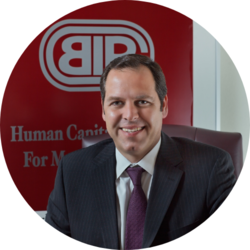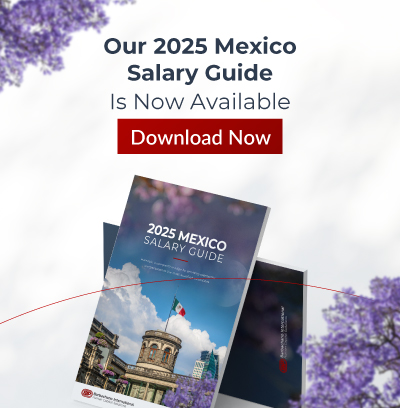
Baby Boomers and, to a lesser extent, Gen Xers tend to think that one is lucky to have a proverbial bird in hand and shouldn’t run off chasing two in the bush. To them, job stability, predictability, and a steady paycheck are the keys to a good life. However, a recent report by Gallup, shows that later generations, such as Millennials, believe that stability can lead to stagnation and that a job jump often means a salary bump.
You can make a case for stability and growth, and deciding whether to stay at a job or move on is deeply personal. Focusing on stability can decrease overall stress because it offers a consistent schedule and income. However, pursuing growth can lead to new opportunities and sometimes tremendous success. It’s up to you to find the right balance between these two options, depending on your situation and priorities.
The most crucial factor to consider is the long-term implications of each choice. Think beyond your immediate reasons for considering a change and instead ponder how each decision will influence the arc of your career.
To excel in today’s ever-evolving job market, individuals must decide this delicate equilibrium, charting a path that optimizes stability and growth to ensure long-term career satisfaction and prosperity.
Understanding the Dichotomy:
The fundamental human desire for security and advancement lies at the core of the stability-growth dichotomy. Stability represents a firm foothold in a consistent job role, accompanied by a sense of familiarity and routine. On the other hand, growth embodies the pursuit of continuous improvement, acquiring new skills, and embracing novel challenges. The balance between the two is not one-size-fits-all but rather a bespoke approach unique to each individual’s aspirations, circumstances, and risk appetite.
The Role of Stability:
Stability is the bedrock upon which professional success is built. It provides:
- A platform for honing expertise.
- Fostering deep domain knowledge.
- Establishing oneself in a particular industry or organization.
Stability engenders a sense of comfort and confidence that enables professionals to excel and innovate within their defined roles. It is also vital in maintaining a healthy work-life balance, reducing stress, and fostering loyalty to employers.
However, too much stability can lead to complacency, stifling creativity and inhibiting personal growth. It may deter individuals from seeking new challenges, limiting their exposure to novel experiences that fuel intellectual curiosity and skill diversification.
The Imperative of Growth:
Growth is the driving force behind continuous career advancement and professional fulfillment. Embracing growth involves stepping out of comfort zones, seizing learning opportunities, and challenging the status quo. Pursuing growth empowers individuals to adapt to changing industry demands and thrive amidst uncertainty.
Moreover, personal growth transcends mere skill acquisition; it cultivates resilience, adaptability, and a growth mindset. Professionals seeking growth demonstrate a proactive commitment to their development, positioning themselves as valuable assets to employers.
However, unbridled pursuit of growth may lead to job-hopping, frequent transitions, and a lack of depth in expertise. Discerning when growth translates into long-term progress rather than merely short-term novelty is essential.
Crafting the Perfect Balance:
Achieving the delicate equilibrium between stability and growth necessitates a strategic approach to career planning. Here are some guidelines to help craft the ideal balance:
- Self-Reflection: Conduct a comprehensive self-assessment to identify personal strengths, areas for improvement, and long-term aspirations. Understanding one’s values and objectives lays the foundation for informed decision-making.
- Goal Setting: Establish clear career goals encompassing short-term stability and long-term growth objectives. This approach ensures immediate needs are met while aligning with the larger vision.
- Continuous Learning: Embrace a growth mindset and commit to lifelong learning. Seek opportunities for professional development, acquiring new skills, and expanding knowledge horizons.
- Networking and Mentorship: Cultivate a robust professional network and seek guidance from mentors who successfully balance stability and growth in their careers.
- Flexibility and Adaptability: Be open to unexpected opportunities and willing to take calculated risks. Flexibility allows for seizing growth opportunities without compromising stability entirely.
- Regular Assessments: Periodically evaluate progress and make adjustments as necessary. A well-balanced career journey is not static but evolves in response to changing circumstances and personal growth.
Decoding the job journey and harmonizing stability with growth is an art form that requires finesse, resilience, and vision. It is not a binary choice between the two but a dynamic dance that unfolds throughout one’s career. Before switching jobs or employers, your well-being and life satisfaction are the most crucial factors to consider. If you’re flourishing and thriving where you are and foresee plenty of growth and opportunity there—maybe stay. If your current learning and growth opportunities have stalled or you’re truly unhappy—maybe, make that leap. As captain of your ship, you have the right to chart your course and not simply go where the wind takes you.

By Fernando Ortiz-Barbachano
President & CEO of Barbachano International (BIP)
Barbachano International is the premier executive search and leadership advisory firm in the Americas (USA, Mexico, Canada, and Latin America) with a focus on diversity and multicultural target markets. Outplacement and Exe

